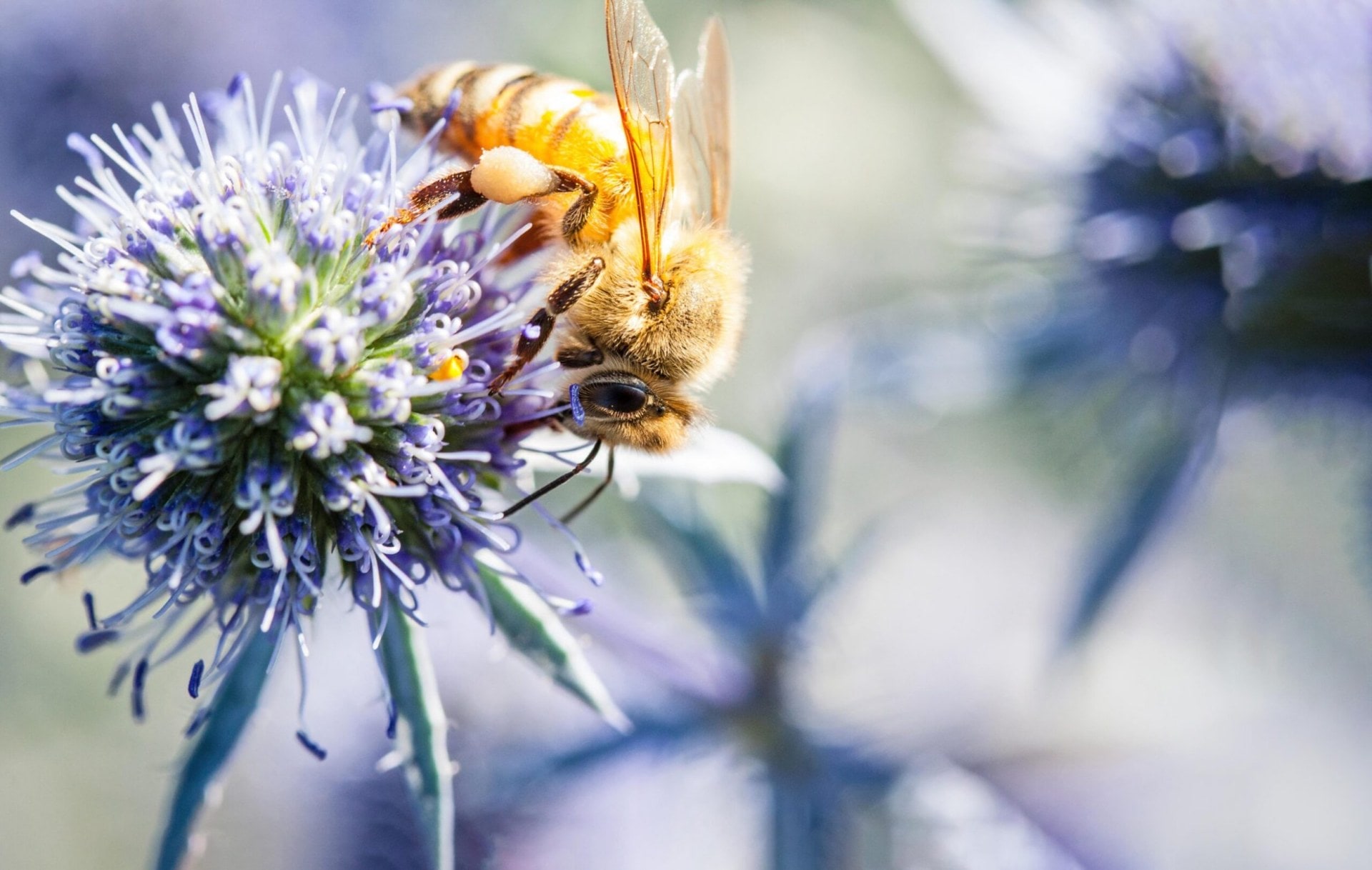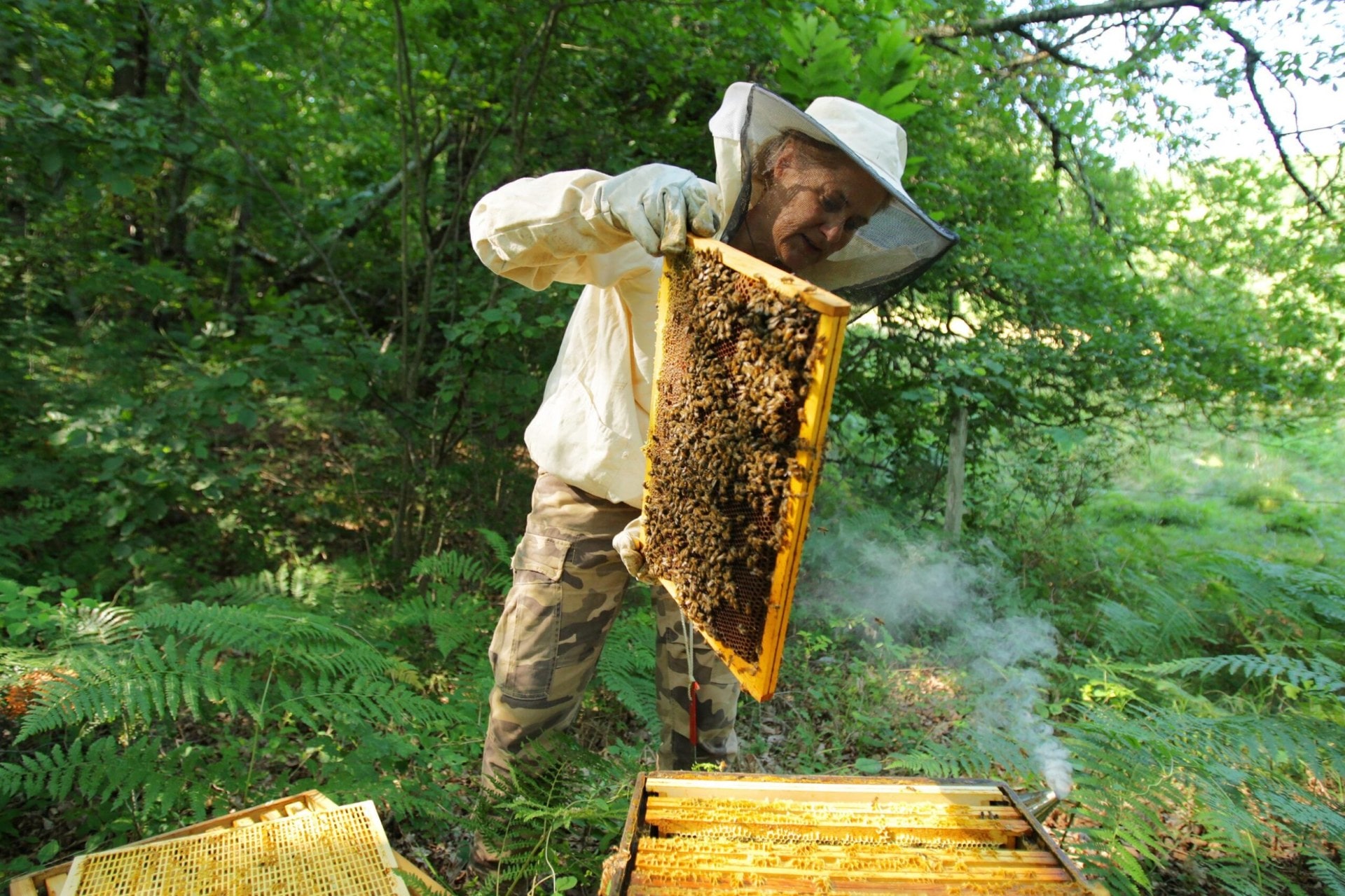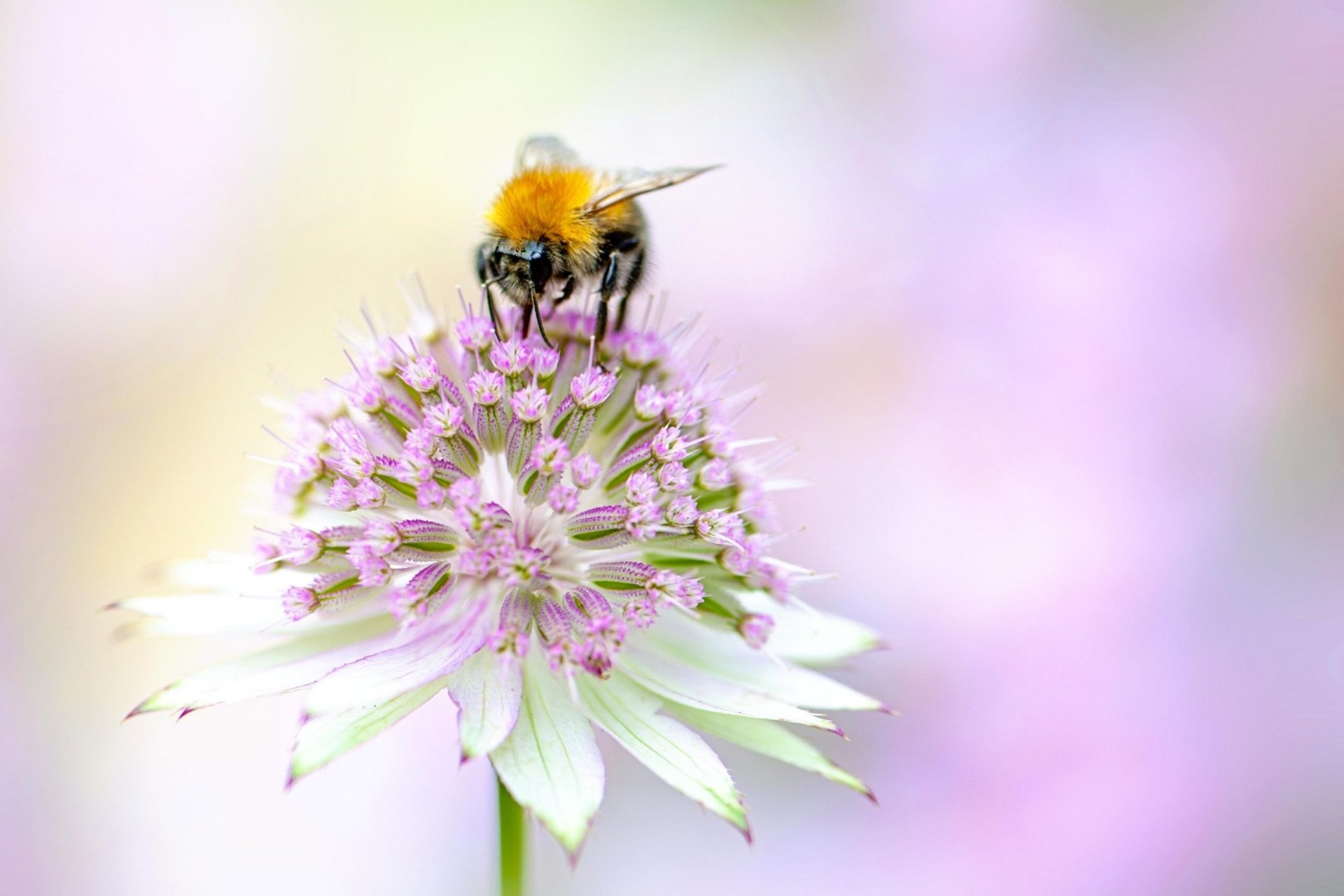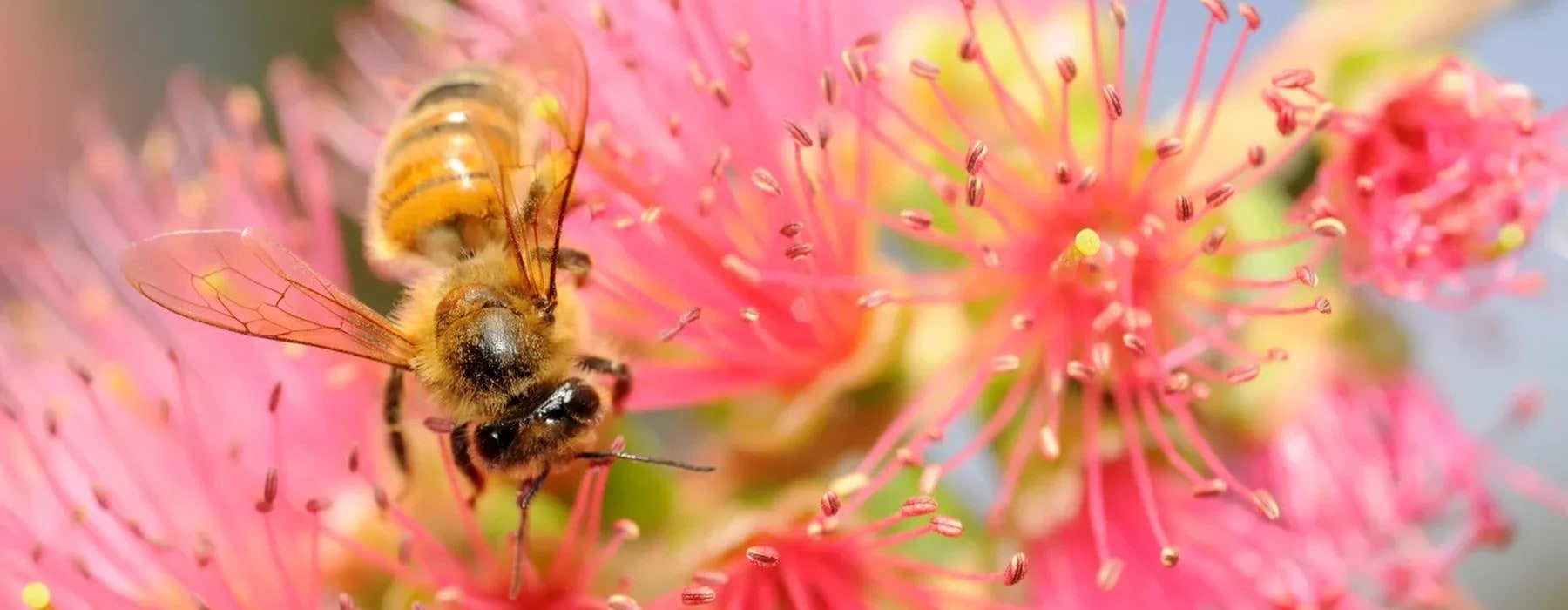Bees give us honey, pollinate most of our fruit and vegetable crops and are major players in our ecosystems, but are we over-farming them? Rachel Clare looks at the plight of the honey bee.
It’s mid-spring – swarm season – and one of our hives has swarmed, thankfully on the edge of one of our raised vege beds. Last year they congregated in the neighbour’s plum tree, hanging from one of its branches in a frothing mass. Much precarious balancing on ladders followed, until the swarm could be collected and housed in a new bee box.
The neighbour is good-natured about it though. We give her jars of honey every year and she gives us bags of plums from the same tree the bees pollinated in September.
I’m an observer in all this – my partner is the hobby beekeeper who devotes the necessary hours to checking through the hives, treating them for varroa and fretting about them. We’re all fascinated by them though – their buzzing is backdrop noise to our small suburban garden. One of my son’s classes comes to visit the hives and they write thank you letters saying they were scared of the bees at first but that the honey was delicious.
Honey bees (Apis mellifera) may not be native to Aotearoa but we are obsessed with them. The tiny creature has pollinated our cultural subconscious, thanks in part to the 20,000 or so tonnes of honey we produce each year and our $6.4 billion horticulture industry, which would be significantly less fruitful without its winged workforce.

But it’s more than that. Kiwi kids have been playing with wooden buzzy bee toys for 70 years and we house our politicians (and smoke them out) in our 1977 brutalist-style parliamentary building, the whare pī (The Beehive), which is apt because that’s exactly what a beehive is – an often-brutal community or a superorganism with a complex society, where every bee has a role to play in the health and survival of the hive.
A win-win situation
Bees have a symbiotic relationship with plants that goes back 100 million years. Worker bees gather pollen and nectar from flowers and sap from trees, and as they do so, tiny pollen grains sticks to the hairs on their body, and are transferred from the female parts of one flower to the male parts of another. The plant is pollinated and able to set fruit and seed to ensure the survival of its species, and the bee gets food. Worldwide, around 75 percent of crop species rely on pollination from animals, mostly by bees, and it’s estimated that without them, yield from fruit, nut and seed crops would drop by 90 percent.
Sticky business
Humans have been using honey bee products for around 9000 years, but bees didn’t arrive in Aotearoa until 1839, when Mary Bumby arrived in the Hokianga with two hives. Other early Pākehā settlers brought hives with them, and by the 1860s there were records of nests of wild honey bees in the bush. But it wasn’t until the Langstroth hive – the boxed-frame beehive with moveable frames that most beekeepers use today – was introduced here in 1878 that commercial beekeeping took flight. By the end of the 1920s there were more than 100,000 hives in New Zealand. Today there are 804,756 registered beehives and around 9500 beekeepers.
Apiculture New Zealand, the industry body for all things bee related, estimates that the industry is worth $5 billion a year, not just in terms of honey (we exported $505.5 million of honey in 2020, an increase of 46 percent from the year before), but because of the crucial role that bees play in pollinating pip, berry and stone fruit for the horticulture industry, and clover and other crops used for nitrogen regeneration in the agricultural sector.
Apiculture New Zealand’s chief executive Karin Kos says that a significant growth has been in the domestic space and that more than 6000 of the registered 10,000 beekeepers are hobbyists. “People just really want to support bees – bees are important to the environment, to pollination and they produce wonderful honey.” She also credits initiatives such as Apiculture New Zealand’s Bee Aware month, a campaign held every September, which promotes planting for bees, minimising or not using sprays, and buying local honey.
“A lot of schools are getting into beekeeping. Year on year we see a growing interest in bees and beekeeping and it is related to that whole movement around caring for the environment and having plants to support bees and pollination.”
Buzzkills – are bees in trouble?
Campaigns like Bee Aware month are a trend all over the world, after bee populations began plummeting in the 1990s, with colony collapse disorder (CCD), starvation and habitat loss being the buzz words.
Phil Lester, a professor of biology at Victoria University of Wellington Te Herenga Waka and the author of Healthy Bee, Sick Bee, says he is often asked about CCD in New Zealand – an X-Files-type phenomenon where bees abandon hives completely, sometimes leaving only a queen and immature bees. It began in Europe in the 1990s, then in 2006 it caused the loss of one million hives in the US and has also been observed in Asia and Africa. Phil writes in his book that the main scientific consensus is that it is caused by multiple factors including pathogens, parasites, pesticides, poor-quality food and climate. However, while he thinks it’s a trend that is likely to continue, as yet it hasn’t been observed in New Zealand or Australia.
This doesn’t mean everything is hunky-dory with Aotearoa’s bee populations though. Beekeepers have to constantly be vigilant about checking and treating hives for parasites such as varroa – a blood-sucking mite that will destroy entire hives if left untreated, which affects up to 70 percent of Kiwi hives in autumn. Then there is the black plague of the bee world – American Foulbrood (AFB), a bacterium spread via spores. If large-scale infection occurs, the hive emits a smell similar to dead fish, and by law the entire hive and all the bees need to be burnt and killed. “Some will tell you it is like losing a member of their family,” says Phil.
While AFB’s influence is devastating, according to Landcare Research’s annual bee colony loss survey, it accounts for less than 1 percent of colony loss in Aotearoa. The main contributors to colony loss are generally varroa (3.5 percent in 2020) and queen problems (3.7 percent in 2020).
What about herbicides and pesticides?
While we know that pesticides like neonicotinoids and herbicides kill bees, beekeepers do not cite them as a cause of death in the annual survey. Phil thinks they are probably right. “Just how much of a problem, neonics and glyphosates are in New Zealand is really difficult to put a finger on. We don’t have a good understanding of what our bees are being exposed to and what they’re bringing back to the hive. I don’t think it’s as bad as places in Europe where there has been heavy use of those chemicals for a long time and there’s a lot of residue in the soil and water tables. Glyphosate might affect the gut bacteria of the bee, and there has been some work on it to show that it can interfere with bee navigation and learning – but how realistic it is that bees are exposed to high levels of glyphosate, we just don’t know at this stage.
The EPA [Environmental Protection Authority] specifically recommends that you don’t use chemicals such as neonicotinoid insecticides when plants are flowering. Using a herbicide will kill the plant so there won’t be any nectar or pollen for the bee to forage on.”
Hungry bees
A major issue facing bees throughout the world, including in New Zealand, is starvation, largely due to habitat loss. In New Zealand this can also be attributed to overstocking of hives, particularly in the lucrative mānuka honey industry. “A farmer will let mānuka honey people put hives on his property but over the fence a different farmer will allow it to happen. There is lots of competition for mānuka honey but also for other types of honey too, which does mean that bees go hungry because there’s not enough nectar and honey around,” says Phil.
Another cause of starvation is monoculture, when pasture or large areas of one type of crop deprive bees of a range of different foods, which can be detrimental to their health. “Bees are clever in choosing which pollen they get. If there is a disease in the hive they will go and look for pollen of a particular species to treat that disease,” says Phil.
Trees for Bees, a research project initiated in 2009 by Federated Farmers Bee Industry Group, regional councils and Landcare Research, among others, is dedicated to developing bee-foraging plantations for farm and apiary operations that provide pollen and nectar for bees when there is a shortage of food. They have developed regional-specific guides with comprehensive information on what nectar and pollen-rich plants landowners can plant to encourage bees, including native species for revegetation or riparian planting schemes.
Providing bees with a diverse range of food all year round boosts our food security, protects our ecosystems and ensures a sweeter future.
Wanna be a beekeeper?
Even if you just want to have a hive in your backyard, beekeeping requires a high level of commitment and is a fairly steep learning curve, so you need to have the time and interest. If you’ve never managed to keep a goldfish alive, it’s probably not the hobby for you!

- Go along to your local beekeeping club to find out more. They may offer courses as well. Check out the list on apinz.org.nz/clubs-and-hubs/.
- It’s a good idea to find out about your local council’s bylaws on beekeeping.
- Under the Biosecurity Act 1993, anyone who keeps beehives in New Zealand must be registered as a beekeeper, and their hives need to be registered too.
- Once you have a hive, you’re required by law to have an approved beekeeper check it for American foulbrood (AFB) infection every year. It’s also highly recommended that you attend an AFB recognition course. Go to afb.org.nz/training.
- Join the beekeeping industry body Apiculture New Zealand. As well as funding research and science, they publish a monthly magazine and offer a range of services to beekeepers.
- Learn about the risks around poisonous tutin in honey, about allergies and bee health.

Workers Wanted!
If you were considering a career in a beehive, the job descriptions would read like this:
- Queen (one position available): A killer instinct is a prerequisite, because if you really want this role, upon hatching you must fight your sister queens to the death. Apart from a couple of mating flights, you will be required to lay up to 1500 eggs a day. Must be able to set the mood of the hive through powerful pheromones.
- Drone (seasonal work with 500 positions available): Seeking fertile males. Meals will be provided to you free of charge. Otherwise laze back and enjoy watching the buzz of the worker bees around you until it’s time to mate with the queen – after which time your genitals and your employment (and life) will cease. For those who remain unmated, board will be provided until autumn, when you will be made redundant and homeless.
- Worker bee (50,000 positions): Seeking infertile females who are strong team players. This is a multitasking position with a clear career-progression framework. After hatching, you will spend several days cleaning your cell, then depending on the needs of the hive you will spend the first two weeks of your life in various roles as a nurse feeding baby bees, undertaker removing dead bees from the hive, feeding young drones, tending to the queen, communicating her messages and also managing her affairs, packing pollen, building honeycomb, making honey, air-conditioning the hive (must have strong wings) and guarding the entrance. On completing this training programme, travel opportunities as a forager bee will be provided, meeting with floral stakeholders and collecting nectar and pollen.








